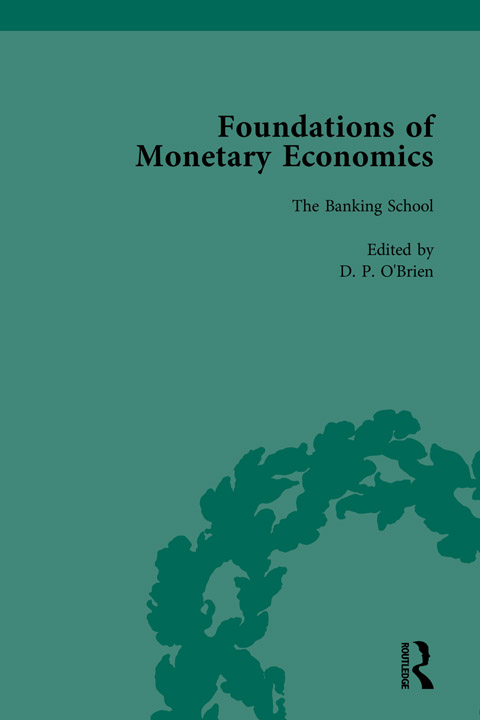
Foundations of Monetary Economics
Edited by D. P. O’Brien
- Published: 2016
- DOI: 10.4324/9781851961900
- Set ISBN: 9781851961900
Set Contents
The Banking School
- Edited by
- D. P. O’Brien
Volume Contents
-
Front Matter
-
Introduction By D. P. O’Brien
-
11840 A History of Prices and of the State of the Circulation By Thomas Tooke
-
1844 An Inquiry into the Currency Principle
By Thomas Tooke
-
IStatement of the Currency Principle
-
IIMode of Operation of a Metallic Circulation
-
IIIMistaken View by the Currency Theory of the Working of the Existing System
-
IVDistinctive Properties Ascribed to Bank Notes
-
VDeposits and Cheques
-
VIBills of Exchange
-
VIIDistinction of Circulation as Between Dealer and Dealer, and Between Dealer and Consumer
-
VIIIRegulation of the Circulation by the Foreign Exchanges
-
XIThe Bank of England has not the Power to Add to the Circulation
-
XIIOn the Connection Between the Amount of the Currency and the Prices of Commodities
-
XIIIOn the Connection between the Rate of Interest and Prices
-
-
31844 The Currency Question By John Stuart Mill
-
1845 On the Regulation of Currencies
By John Fullarton
-
Chapter II
-
Chapter III
-
Chapter V
-
Chapter VI
-
-
1847 Capital, Currency, and Banking
By James Wilson
-
Article V
-
Article VI
-
Article VII
-